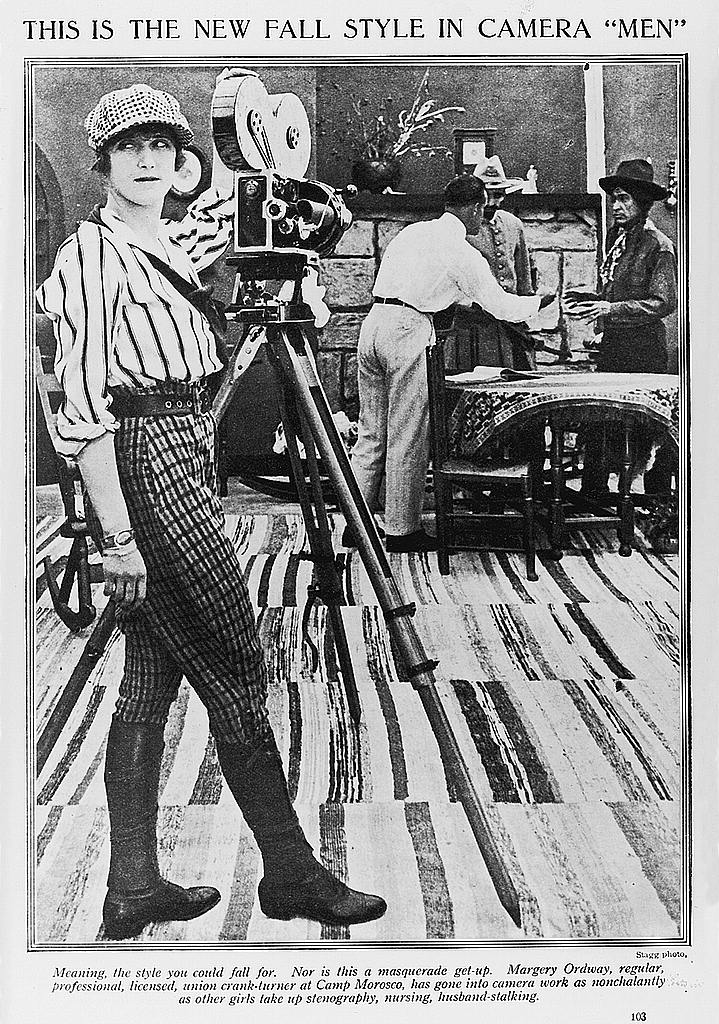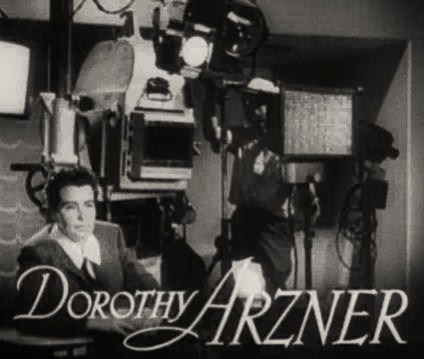
There are a plethora of images from the dawn of the silent era of women operating film cameras. But what exactly was the role of women on set? According to Jane Gaines and Michelle Koerner in an essay for the Women Film Pioneers Project, not all these women seen photographed with cameras were actually professional camera operators. But their influence is not to be misinterpreted!
In October, 1916, one of the first American film magazines Photoplay featured a full page photo of Margery Ordway wearing a masculine striped shirt, checkered pants, and a cap. The caption ties to play up Ordway’s gender role as she assumes camera man. It reads.”This is the New Fall Style in Camera ‘Men.” Her outfit is brave, daring, and crossing definite borders.
Funnily enough, the authors of the essay write that the term “crank” invoked a double meaning, for the physical motion of camerawork, and inferring that a woman who works behind the camera is bad-tempered.
More women worked at all levels of Hollywood film industry (not just acting!) in its first two decades than at any time since. While Hollywood is often the subject of focus, this was actually a global phenomenon. Evidenced by developments in Latin America and beyond, the industry looked to women for their workforce.

One example of these female figures is Dorothy Arzner. Born and raised in Hollywood. Active from 1915 to 1943, Arzner’s work is important from a feminist perspective because she was female director concerned with the female relationships on screen, as stated by Grinnell College scholar Theresa Geller. She worked with Paramount until 1932, producing 11 films until leaving the company to work independently.
In Mexico, Mimí Derba kept busy working both on and off-screen. Mimí Derba debuted as a theatre actress, eventually transitioning to film. When the Mexican Revolution ended in 1917, enough economic and social stability allowed for the development of Mexican feature film production. Another legacy to film history in Gabriela von Bussenius Vega. She was the primary Chilean female filmmaker. She and her Italian husband established the national film foundation, she wrote the story of La agonía de Arauco and helped with its extensive production efforts.
These women, together with so many others, have become the focus of academic research and criticism as the lens of feminism and films widens. Thank you for reading and follow me @Phil_Ranstrom for the latest updates.